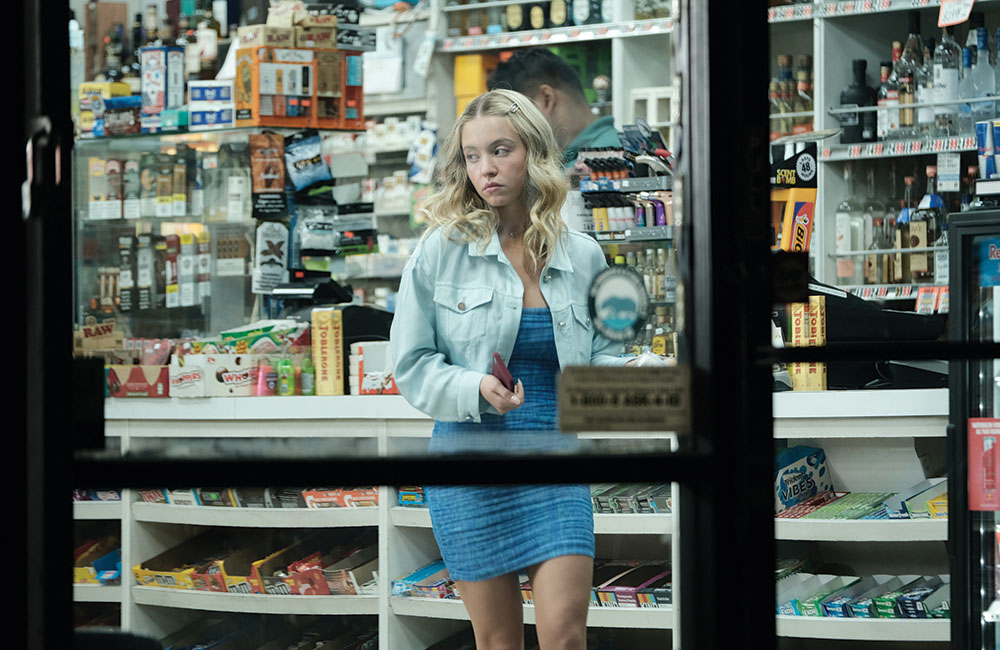
Courtesy of HBO

To older generations, the newest generation coming up always feels the most confounding and intimidating — as exemplified by small-screen portrayals of the formidable Gen Z. In The White Lotus, an affluent co-ed, dressed in a relaxed college sweatshirt and denim shorts, scathingly and astutely mocks fellow guests vacationing at a luxury resort in Maui. In Euphoria‘s fictional Los Angeles suburb, a high schooler teeters and stomps in vintage Prada kitten heels and a tight minidress while attempting to assert herself during a teenage rite of passage: a New Year’s Eve party.
Sydney Sweeney plays and deftly distinguishes the formidable, complex and often-contradictory Cassie on Euphoria and Olivia on The White Lotus — and earned nominations for both turns. Similarly, their Emmy-nominated costumes — by Euphoria‘s Heidi Bivens and The White Lotus‘ Alex Bovaird — also are distinctive depictions of young women navigating expectations and influences from society at large as well as their discerning and unforgiving peer groups.
“She’s trying to figure out how she wants to be seen and how to get respect,” three-time nominee Bivens says of Cassie. “A lot of that has to do with how she feels about her family, her father leaving and her body.”
While trying to impress her love interest, Cassie is confronted by her friends in the school bathroom who question her over-the-top Dolly Parton-inspired blue gingham and puff-sleeve wrap-top and matching floral, inverted-pleat minidress, which were designed in collaboration with and custom-built by L.A. designer Seth Pratt. Bivens says she made a meme-worthy costume that was in character for Cassie, which ironically went viral: “[The outfit] comments on this other reality that young people are living through social media. There’s this performance happening on social media that doesn’t actually reflect people’s day-to-day lives all the time.”

Courtesy of HBO
The White Lotus‘ Olivia brings her less-affluent friend, Paula (Brittany O’Grady), along on vacation with her family, headed by her media mogul mother (Connie Britton). “Everything that they wear is a bit of a mashup, which is how Gen Z is with clothes. The cool ones, anyway,” says first-time nominee Bovaird.
“[Olivia’s] struggling between trying to find a place and her voice in the wild while existing in this wealthy family — being very conscious about that but really self-conscious about wanting to voice issues from another place,” says Bovaird. “She finds herself between two worlds.”
Representing some of this cohort’s socially conscious shopping and aversion to fast fashion, Bovaird infused secondhand pieces into Olivia’s wardrobe. In “mean girl” mode, while emotionally terrorizing millennial writer Rachel (Alexandra Daddario), Olivia wears a high school uniform-referential vintage swim ensemble: a striped tank and skater-skirt set.
But her costumes purposefully send out mixed messaging. Olivia and Paula sneer at her neoliberal parents’ consumerism but also flex with “flashy sneakers and logo slides,” notes Bovaird. “That’s indicative of the age when you’re trying to figure out your values.”

Courtesy of Mario Perez/HBO
As the show progresses, so do the young women’s clothing — underscoring the dynamics of their interracial friendship. Olivia evolves from casual wear to body-con pieces and flirty minidresses, while Paula retreats into brooding, darker hues and slouchy silhouettes. Says Bovaird, “That does speak to their dynamic, where Olivia has the power in the relationship but also in the world at large.”
While the young women confront varying societal pressures, Olivia and Cassie do find themselves in a time-honored and universal situation: dressing for their peers — and their best friends.
This story first appeared in a July stand-alone issue of The Hollywood Reporter magazine. To receive the magazine, click here to subscribe.